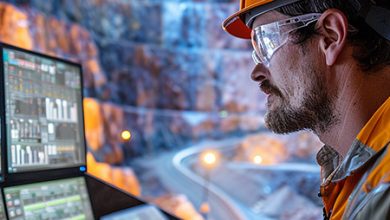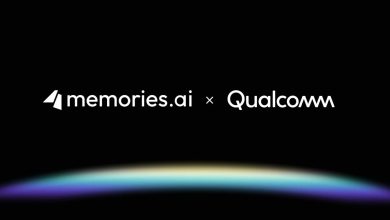The world of mobile robotics is expanding on a global scale, and the use of robots is becoming increasingly critical to operations of all types and size. Markets including manufacturing, consumer goods, logistics, healthcare, delivery, and many more are embracing this automation.
While the pace of innovation in robotics is astounding, most mobile robots deployed today are still not fully autonomous and are incapable of moving freely in complex real-life environments. Mobile robots in warehouses and other rigid, mapped environments are common, but can be expensive and functionally limited.
To truly achieve the remarkable potential this technology can deliver requires vision-based perception, freeing robots from strictly controlled environments and allowing them to operate with human-level understanding in a broader range of applications. These advancements are happening now, combining computer vision with additional sensors to make robotic perception robust, accurate and immune to temporal failures. And thanks to seismic leaps in artificial intelligence technology, this can now be delivered in simple, cost-effective ways.
Improving on LiDAR
Processing large volumes of data from cameras on low-cost hardware is the basis of next generation technology being pioneered in mobile robotics. Solutions are being perfected which utilize just a single camera with a field of view of over 180 degrees. Combining high resolution with a broad field of view, the camera can better interpret and understand situations. Even small, subtle movements and motion are captured by its high-resolution image, and it can see and recognize humans around it, even at long distances.
A major advantage is the computer vision technologies built into the platform powering the cameras and the ability to handle challenging environments where LiDAR typically loses robustness. For example, in a logistics warehouse where rows of racks and shelving systems are repeated throughout the facility, humans (and cameras) can see natural features on the ceiling, floor and far into the distance on the other side of the facility. But the 2D ‘slice’ of the world that a LiDAR can see is simply not enough to distinguish between the different, repetitive features in these environments. As a result, LiDAR based robots can be brought to a halt simply by encountering unfamiliar obstacles or barriers.
Opening New Worlds
Camera-based visual perception, by contrast, can detect things like texture and color. This creates significant advantages over other senor modalities because the robot can use this visual information to precisely navigate through a facility, just the way a human would. This capability is especially critical in warehouses and manufacturing facilities where pedestrian paths are defined with lines and floor markers. Camera-based systems can read signs and symbols that alert both humans and robots to temporary closures, wet floors, and detours.
These same challenges apply in open and highly dynamic environments like cross-docking and open warehousing facilities. The ‘slice’ that LiDAR saw and interpreted during their last visit may now be open space—or something else altogether. A camera-based system can identify, process, and adapt to these variables immediately; again, just as a human would.
As the use of robots becomes more integral to the global economy, there remains significant value in traditional sensor modalities including LiDAR. Recent advancements in low-cost MEMS 3D LIDARs are encouraging and, when combined with cameras, could add cost effectiveness, robustness, and rich 3D mapping capabilities.
But as the field grows and the level of required understanding rises, only vision-based perception which powers AI models can allow robots to achieve human-level understanding and reach their true potential. Combining vision with additional sensors makes the robots’ perception robust, accurate and immune to temporal failures.
Reigning in Cost
The breakthrough combination of deploying lower-cost cameras with robust AI-based software and platforms make this technology tremendously cost-effective. System costs of hundreds of dollars may be supportable in logistics and manufacturing; however, in consumer robotics that number drops to tens of dollars and lower.
Camera-based systems have increasingly become the solution as robot manufacturers seek better, less-expensive options. They can ‘see’ and digitize everything in their field of view, while utilizing economies-of-scale from consumer electronics. Even simple cameras costing under $5 can provide enough resolution and field-of-view to support robust localization, obstacle detection and increased levels of perception.
This unbeatable combination—bold technological advancement, at low cost—opens the doors to nearly limitless use cases for robotics. The coming years will certainly see dynamic changes as state-of-the-art evolves in artificial intelligence, computer vision, sensor fusion and other innovative automation technologies. But it is increasingly certain that vision-based perception, utilizing cameras and computer vision, should serve as the foundation of any effective mobile robot navigation system.



